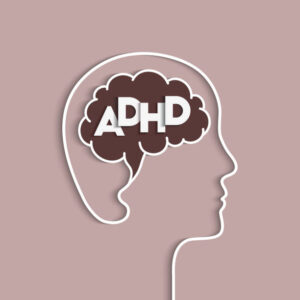
Parenting a child with Attention-Deficit/Hyperactivity Disorder (ADHD) presents unique challenges and requires tailored strategies to support their development and well-being. Understanding ADHD and implementing effective support systems can significantly enhance the child’s quality of life and family dynamics. This article explores various strategies and resources available to parents navigating the complexities of raising a child with ADHD.
Understanding ADHD
ADHD is a neurodevelopmental disorder characterized by inattention, hyperactivity, and impulsivity. Children with ADHD may struggle with maintaining focus, following instructions, and controlling their impulses, which can impact academic performance, social interactions, and self-esteem.
Symptoms of ADHD
- Inattention: difficulty sustaining attention, making careless mistakes, and organizing tasks.
- Hyperactivity: restlessness, fidgeting, and excessive talking.
- Impulsivity is characterized by acting without thinking, interrupting others, and having difficulty waiting for turns.
Diagnosis and treatment
Early diagnosis is crucial for effective management. Healthcare professionals, including pediatricians and psychologists, assess symptoms and recommend appropriate interventions. Treatment options often include:
- We use medication such as stimulants like methylphenidate (Ritalin) or non-stimulants like atomoxetine (Strattera) to manage symptoms.
- Behavioral therapy helps develop coping strategies, improve organization, and enhance social skills.
- Parent Training: Teaches parents techniques to manage behavior and create supportive environments.
Supportive parenting strategies
Parenting a child with ADHD requires patience, consistency, and understanding. Implementing structured routines and positive reinforcement techniques can foster a supportive environment.
Establishing Routines
Structured routines provide predictability and stability, which are beneficial for children with ADHD.
- Consistent Schedule: Establish regular meal times, bedtime routines, and homework schedules.
- Visual Timetables: Use charts or calendars to outline daily activities and expectations.
- Clear Instructions: Break tasks into manageable steps and provide clear, concise instructions.
Encourage positive behavior.
Positive reinforcement encourages desired behaviors and motivates children with ADHD.
- Reward Systems: Use tokens, stickers, or privileges to reinforce positive behaviors like completing tasks or following instructions.
- Praise and Encouragement: Acknowledge efforts and achievements to boost self-esteem.
Effective Communication
Clear and open communication strengthens the parent-child relationship and facilitates understanding.
- Active Listening: Pay attention to your child’s thoughts and feelings without judgment.
- Use of Directives: Frame instructions in a positive manner and avoid lengthy explanations.
- Encourage Expression: Allow your child to express frustrations or concerns without interruption.
Creating a supportive home environment
A supportive home environment plays a crucial role in managing ADHD symptoms and promoting overall well-being.
Minimizing Distractions
Reduce clutter and create designated study or play areas with minimal distractions.
- Organizational Systems: Use bins, labels, or color-coding to keep belongings organized.
- Quiet Spaces: Offer a tranquil retreat for relaxation or concentration.
Healthy lifestyle choices
Promote physical health and well-being to support cognitive function and mood stability.
- Nutritious Diet: Ensure balanced meals with adequate nutrients and limit sugary snacks.
- Regular Exercise: Encourage physical activities that release excess energy and improve focus.
Collaborating with educators
Effective communication with teachers and school staff ensures consistent support and academic success.
- Individualized Education Plans (IEPs): Develop tailored plans to accommodate learning needs and behavioral strategies.
- Regular Updates: Stay informed about your child’s progress and address any concerns promptly.
Accessing Resources and Support
Navigating the challenges of ADHD can be overwhelming, but numerous resources and support networks are available to assist parents and families.
Support Groups
Join local or online support groups to connect with other parents facing similar challenges.
- Sharing Experiences: Exchange advice, strategies, and emotional support.
- Professional Guidance: Access insights from psychologists, counselors, or ADHD specialists.
Educational Workshops
Attend workshops or seminars focused on ADHD management and parenting strategies.
- Skill Development: Learn practical techniques for behavior management and academic support.
- Networking Opportunities: For ongoing support, connect with professionals and other caregivers.
Online tools and apps
Utilize technology-based tools designed to assist with organization, time management, and behavioral tracking:
- ADHD Treatment Apps: Apps like “ADHD Treatment” provide resources for medication management, symptom tracking, and educational materials.
Conclusion
Parenting a child with ADHD requires a multifaceted approach that combines understanding, patience, and proactive strategies. By implementing structured routines, encouraging positive behaviors, and creating a supportive home environment, parents can help their child thrive despite the challenges of ADHD. Accessing resources, connecting with support networks, and staying informed about treatment options are essential steps towards effectively managing ADHD and promoting the well-being of the entire family. With dedication and support, parents can empower their children with ADHD to reach their full potential and lead fulfilling lives.
Remember, each child with ADHD is unique, and the strategies that work best may vary. By continuously adapting and seeking support, parents can navigate this journey with resilience and optimism.
